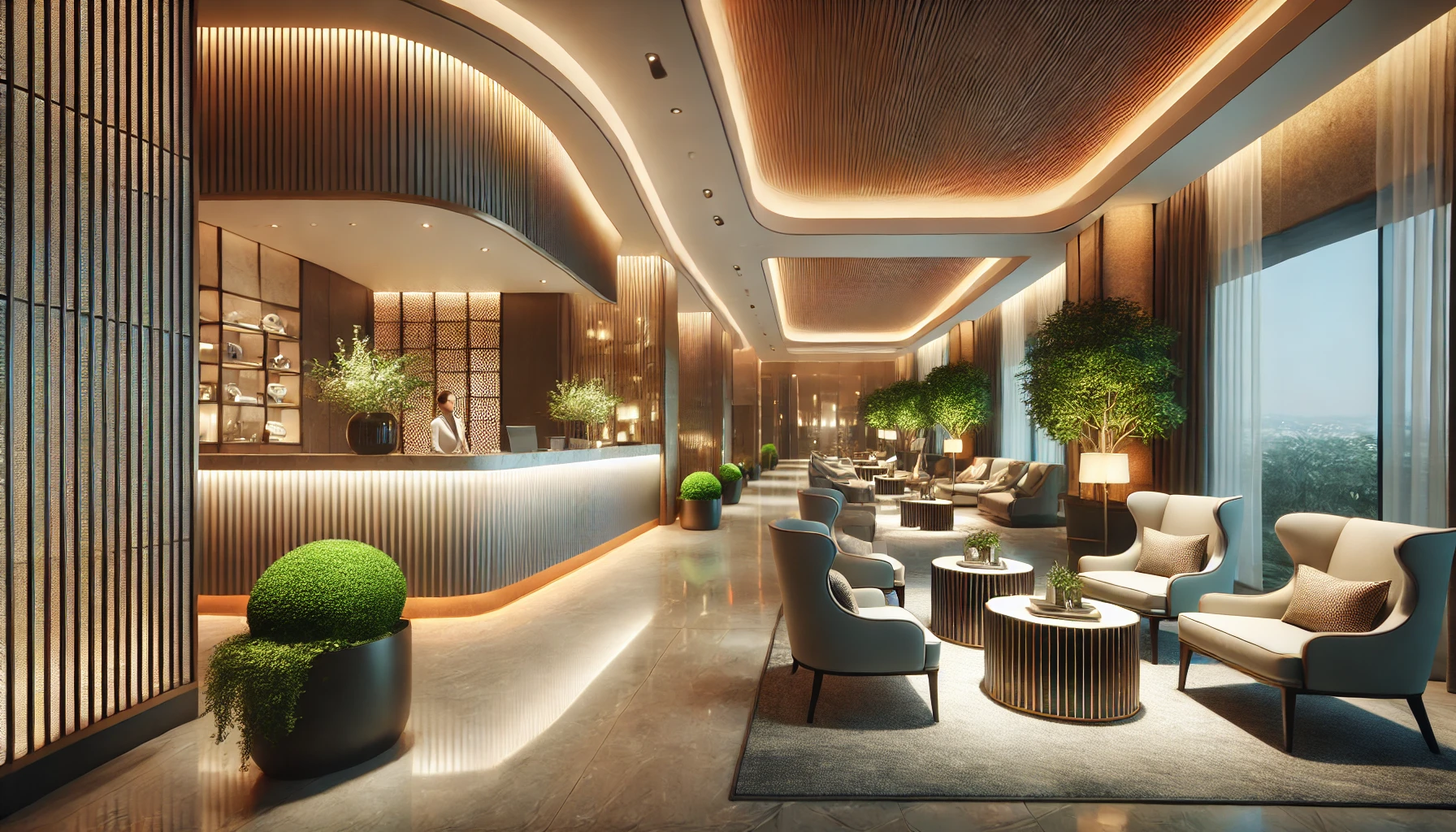A Journey Through the History of Hotels: The Evolution and Transformation of Hotels in the World and Japan
What do you think about when you stay at a hotel?
“This hotel is stylish,” “The service is excellent,” “The bed is so soft and comfortable.”
Some of you may feel that way. But have you ever wondered what kind of history the hotel has gone through to get to where it is today?
Actually, the history of hotels is quite old, dating back to the time of ancient civilizations.
Hotels, which we take for granted today, have a long history of evolution and are filled with the thoughts and feelings of many people.
In this article, we will unravel the history of hotels, from ancient times to the present day, and even into the future.
We will explore the evolution and diversification of hotels, as well as what the future holds for them, by tracing the history of hotels in the world and Japan.
By reading this article, you will surely change the way you look at hotels.
On your next trip, why not spend some special time thinking about the history of the hotel you are staying in
Unraveling the History of Hotels: From Ancient Lodging to the Modern Day
The World’s Oldest Hotel is Japan’s “Keiunkan”!
Certified by Guinness World Records! The oldest hotel in the world is actually located in Yamanashi Prefecture, Japan. It’s called “Keiunkan.”
Founded in 705 AD (Asuka period)! With over 1,300 years of history, it’s a long-established accommodation facility officially recognized by the Guinness Book of World Records.
Keiunkan is located along a valley in Hayakawa Town, Yamanashi Prefecture, and has flourished thanks to the abundant hot spring water of Nishiyama Onsen.
Initially, it was used as a place to provide the healing benefits of the hot springs to local people and those seeking therapeutic bathing.
There are records showing that during the Kamakura period, Lord Shingen Takeda used Keiunkan as a sanatorium for soldiers injured in battle.
In this way, Keiunkan has been closely connected to the community and has made its mark on history while staying close to people’s lives.
Throughout its long history, Keiunkan has been hit by natural disasters many times, but each time it has been rebuilt with the cooperation of the local people.
The building has been renovated many times and, while introducing modern facilities, it still retains many traces of its original appearance, conveying traditional Japanese architectural styles and hospitality culture to this day.
Keiunkan is a valuable heritage not only for Japan but also for the global hotel industry, and it remains a popular tourist destination today.
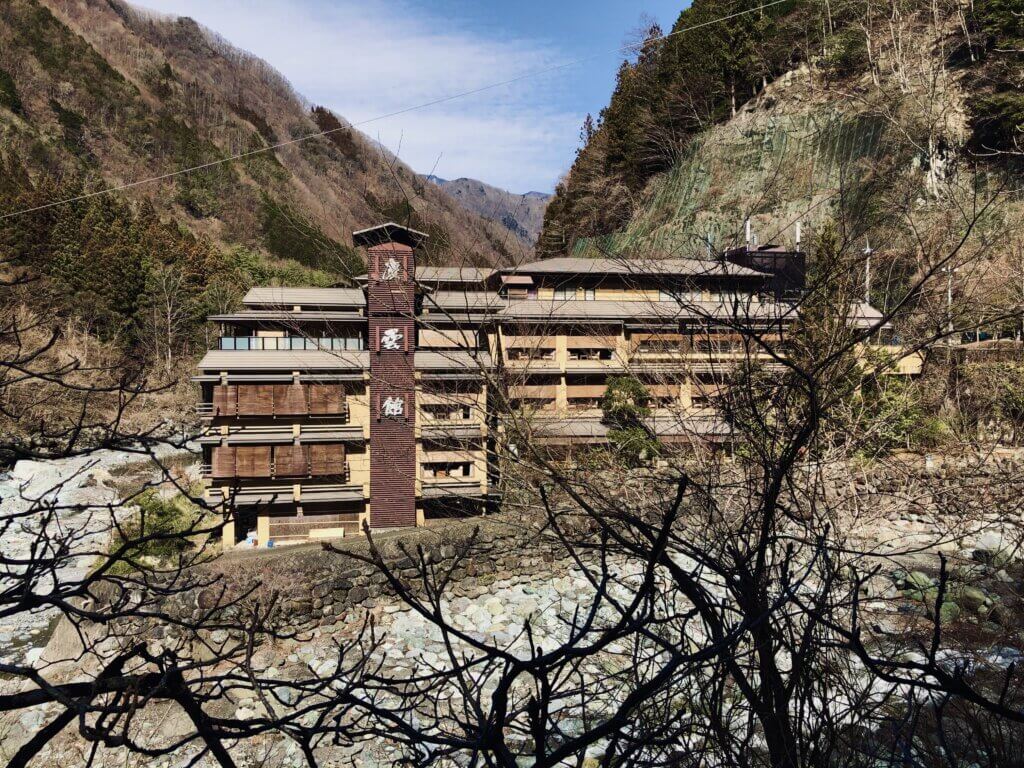
Medieval European Pilgrim Lodges: “Hospices”
In medieval Europe, there were lodging facilities called “hospices” throughout the land, which were different from the end-of-life care facilities we know today.
These hospices were accommodations run by monasteries and churches, providing rest and meals to people on religious pilgrimages.
Especially for pilgrims crossing harsh natural environments like the Alps, hospices were important bases for continuing their journeys safely.
Many hospices were established in mountainous areas, where pilgrims could rest and regain their strength before continuing their travels.
It was common for hospices to offer lodging to travelers free of charge or at very low prices.
This was done as part of charitable activities based on the Christian faith at the time.
For example, the hospice at the Great St.
Bernard Pass in Switzerland has played a role in protecting the lives of pilgrims and travelers since the Middle Ages.
This hospice is still in use as an accommodation today, allowing guests to experience a stay steeped in history.
Another example is the hospice in Le Puy-en-Velay, France.
Founded in the 10th century, it flourished as an important base on the pilgrimage route to Santiago de Compostela.
In this way, hospices in medieval Europe were indispensable to pilgrims and travelers, and it can be said that they influenced the hotel culture of modern Europe.
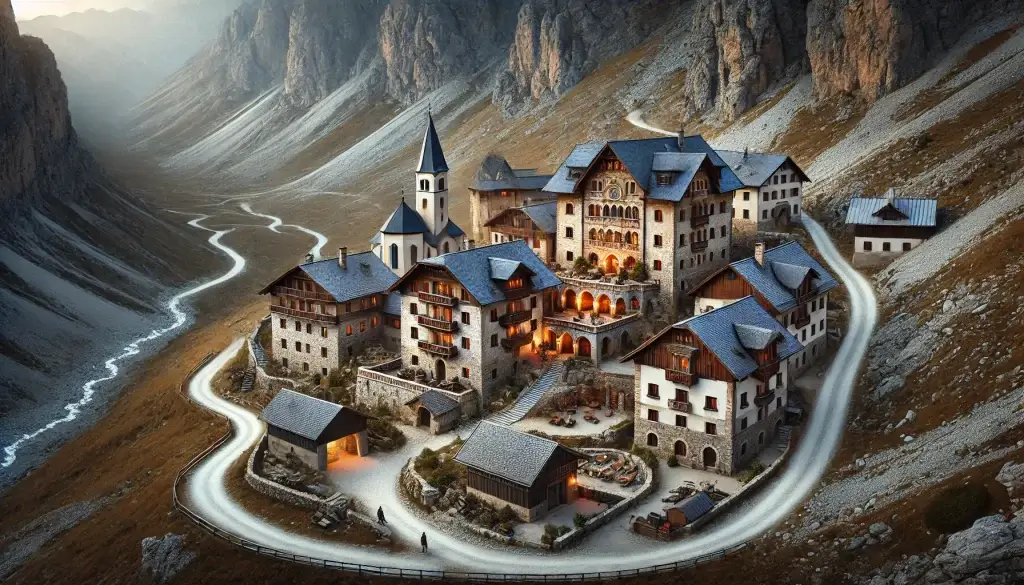
The History of Japanese Ryokan: Uniquely Evolved Accommodation
When discussing the history of lodging, we can’t forget about Japanese Ryokan, with their unique accommodation culture that has continued since ancient times.
The origins of Ryokan can be traced back to the Asuka and Nara periods.
In those days, simple lodging facilities offered by temples and Buddhist institutions served as resting places for travelers.
During the Edo period, post towns were developed and Ryokan began to spread throughout Japan, mainly along the five main roads.
Merchants, samurai, and travelers used these Ryokan to relieve the fatigue of their journeys and as places to exchange information.
In this way, Ryokan became established throughout Japan and formed a unique culture.
Japanese Ryokan are characterized by a distinctly Japanese style, including tatami-matted rooms, zabuton cushions, futon bedding, and Japanese Kaiseki cuisine.
Another appealing aspect is the abundance of relaxation facilities such as hot springs (onsen) and open-air baths (rotenburo).
These reflect Japanese aesthetics and the spirit of hospitality (omotenashi), serving not only as a place to stay but also as a means of allowing visitors to experience Japanese culture.
Even today, many Ryokan continue to operate throughout Japan, used by both domestic and international tourists.
In recent years, with the increase in foreign tourists, they have also evolved to meet the needs of the times, such as providing English support, enhancing amenities, and installing Wi-Fi.
Moreover, Ryokan renovated from old folk houses and new styles of Ryokan that break away from the conventional mold are appearing, leading to a diversification of Ryokan.
In this way, Japanese Ryokan continue to exist as unique and charming accommodation facilities, adapting to new eras while preserving tradition.
Development of Hotels in the West: The Advent of the Grand Hotel Era
It’s the era of grand hotels, where people enjoyed socializing in gorgeous settings!
The development of hotels in the West underwent a major transformation from the late 19th to the early 20th century.
Against the backdrop of economic development brought about by the Industrial Revolution, travel and tourism flourished, and “grand hotels” were built one after another, equipped with luxurious facilities and services so that wealthy people could spend their time comfortably even when traveling.
Grand hotels were truly extravagant spaces.
Imagine dazzling lobbies with sparkling chandeliers, spacious guest rooms with marble pillars, 24-hour room service, and a variety of fine cuisine prepared by dedicated chefs…
These hotels attracted many celebrities and wealthy customers by providing the latest facilities, luxurious interiors, and high-quality service.
Some of the most iconic grand hotels include the Savoy Hotel in London and the Ritz Hotel in Paris.
The Savoy Hotel is known as the first hotel in the world to introduce private bathrooms and electric lighting, while the Ritz Hotel was called the “King of Hotels” for its opulent interiors and superb service.
Grand hotels were not just places to stay, but also served an important role as social venues.
Many hotels were equipped with restaurants, ballrooms, and theaters, and were used as places for cultural, artistic, and business exchanges.
Balls and dinner parties held at hotels were glamorous events in the social world, where people sought new encounters and business opportunities.
The emergence of these grand hotels created a new standard in the hotel industry by offering value beyond just accommodation.
Various elements that have been passed down to modern hotels, such as standardization of service, hotel branding, and providing added value beyond accommodation, were established during this era.
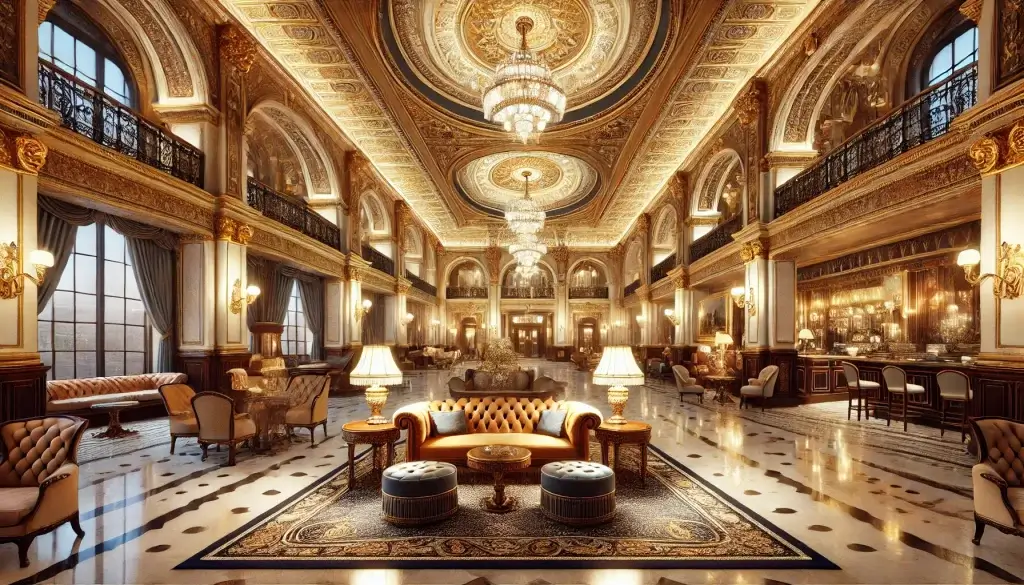
What Was the First Western-Style Hotel in Japan?
The first Western-style hotel to appear in Japan was the “Yokohama Hotel,” which opened in Yokohama in 1868.
With the start of the Meiji era, Japan began to actively engage in international exchange, and many foreigners came to Japan.
To ensure their comfortable stay in Japan, there was a need for hotels with Western-style services and facilities.
Yokohama Hotel was built in a foreign settlement and was furnished with beds, furniture, bathrooms, and more, based on European and American styles.
Western cuisine was also served, and various efforts were made to meet the needs of foreign guests.
For example, they provided foreign-language newspapers and employed staff who could speak foreign languages.
The opening of Yokohama Hotel was a major turning point for the Japanese hotel industry.
Following this, “Tsukiji Hotel Kan” (opened in 1868) and “Imperial Hotel” (opened in 1890) opened in Tokyo, and Western-style hotels spread throughout Japan during the Meiji era.
This provided not only foreign visitors but also Japanese people with more opportunities to experience Western culture, and hotels began to function as new places for interaction.
The development of the Japanese hotel industry accelerated with the opening of these Western-style hotels, triggering the spread of a modern lodging industry.
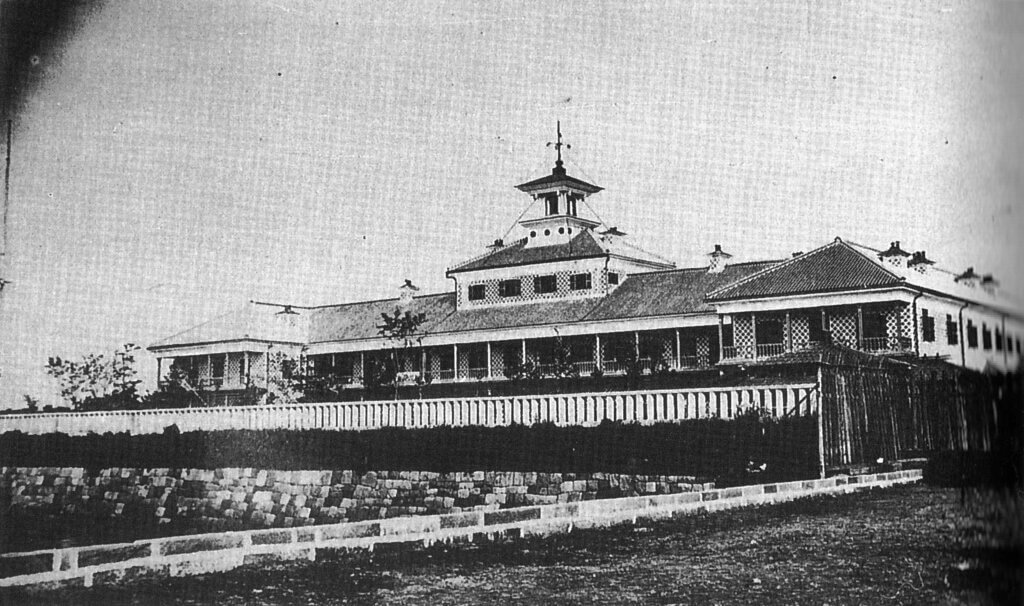
Origins of the American Hotel Industry: Railway Development and the Hotel Boom
The growth of the American hotel industry is closely linked to the rapid expansion of the railway network that occurred in the 19th century.
The opening of railways made travel possible to previously inaccessible areas and stimulated the movement of people.
Railway companies actively built hotels around stations as part of their railway line development.
As a result, many hotels were built along railway lines and near stations, and the hotel industry grew rapidly in response to the demand from travelers.
The hotels that emerged during this period had a variety of functions, including banquet halls, restaurants, and social spaces, in addition to accommodation.
Hotels became an integral part of people’s lives as centers for business, tourism, and social interaction.
In particular, many large hotels called “grand hotels” were built as symbols of cities.
Grand hotels, offering luxurious interiors, the latest facilities, and the finest service, were aspirational for the wealthy and businessmen.
Railway companies themselves increasingly entered the hotel business.
Hotels for railway passengers, such as the Hotel Powell established by the Union Pacific Railroad, were opened one after another, improving the convenience of travel and accommodation.
Along the railway lines, various types of hotels appeared in addition to grand hotels, including small and medium-sized hotels and simple hotels specializing in accommodation.
This was to meet the diverse needs of people using the railways.
In this way, the railway and hotel industries developed mutually, becoming a driving force for establishing a travel culture in the United States.
Hotel History Timeline
| Year | Event |
|---|---|
| 2nd century BC – 4th century AD | Roman Hotels (Mansio): In ancient Rome, there were hotels (Mansio) for long-distance travelers. These were set up along major roads and provided travelers with lodging, food, and care for horses. |
| 8th century BC – 4th century BC | Ancient Greek Lodging (Xenodocheion): In ancient Greece, there were lodging facilities called “Xenodocheion” to welcome travelers. These provided accommodation, food, and ensured the safety of travelers. |
| 5th century BC – 4th century AD | Indian Lodging (Ashram): In ancient India, there were lodgings called “Ashram” for religious practice and meditation. These provided travelers and practitioners with accommodation, food, and supported spiritual growth. |
| 3rd century BC – 3rd century AD | Chinese Lodging (Inn): In ancient China, there were inns for travelers. These were set up along major highways and provided lodging and food for travelers. |
| 705 AD | The world’s oldest existing hotel, “Keiunkan,” was founded in Japan. Established in the late Asuka period, it is still in operation today as a historic hot spring inn. |
| 1282 AD | A hospice for pilgrims was established at the Great St. Bernard Pass in Switzerland. This area later became famous for St. Bernard dogs. |
| 1794 AD | The first luxury hotel in America, “City Hotel,” opened in New York. It was the first to have not only guest rooms but also a public restaurant. |
| 1829 AD | “Tremont House” opened in Boston, USA. It was the first hotel with private rooms that had locks, and also provided lamps and soap. |
| 1868 AD | Japan’s first Western-style hotel, “Yokohama Hotel,” opened. It became popular with foreign tourists and businessmen. |
| 1890 AD | The “Imperial Hotel” opened in Tokyo, Japan. It was built to accommodate foreign dignitaries visiting Japan and symbolizes Japanese hospitality. |
| 1908 AD | Canada’s first motel, “Milestone Mo-Tel,” opened. With the spread of automobiles, it provided services for long-distance drivers. |
| 1950 AD | “Flamingo Las Vegas,” one of the first casino hotels in Las Vegas, opened. It played an important role in the development of Las Vegas as a casino resort. |
| 1979 AD | The world’s first capsule hotel appeared in Osaka, Japan. It met urban lodging needs as a convenient and affordable accommodation option. |
| 2008 AD | “Airbnb” was founded. It launched a platform where individuals could offer their homes or spare rooms as accommodation, providing a new option for the lodging industry. |
| 2010s | The diversification of hotels progressed, with boutique hotels, eco-hotels, lifestyle hotels, and others emerging. Unique and environmentally-conscious accommodations became popular. |
| 2020s | AI concierges, robots, IoT, and other advanced technologies were introduced into hotels. The aim was to improve guest experiences and enhance efficiency. |
Hotel History and Diversification: Evolving to Meet Modern Needs
Hotel Types and Classifications: From Business Hotels to Resort Hotels
Hotels are diverse, varying in purpose, budget, and the services they offer! Broadly speaking, there are “city hotels” located in urban areas and “resort hotels” located in tourist destinations.
Among city hotels, “business hotels” are specifically designed for business travelers.
They offer good access, such as being close to stations, and feature compact and functional guest rooms.
They are perfect for short stays, as they have all the necessities and are relatively affordable.
On the other hand, resort hotels are located in tourist areas and places rich in nature, and are designed for relaxation and longer stays.
They are also attractive for their wide range of facilities that can be enjoyed within the hotel, such as hot springs, pools, and spas. They are ideal for family trips and romantic getaways.
In addition, there are various other types of hotels, such as “boutique hotels” with unique designs and services, “luxury hotels” boasting the highest quality services and facilities, and “capsule hotels” offering affordable accommodation.
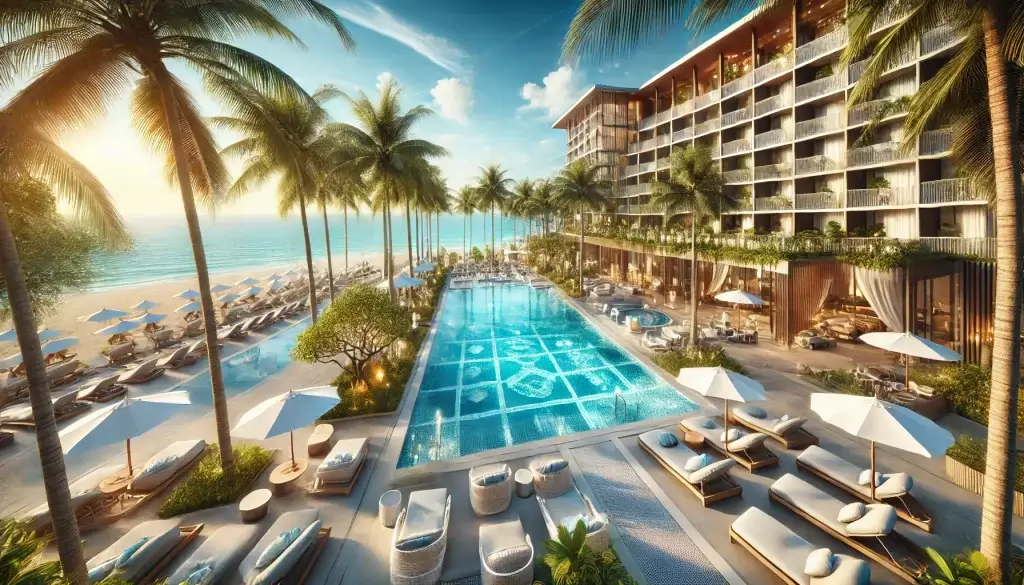
Modern Hotel Classifications in Light of Hotel History: A Process of Evolution
How did modern hotels become so diverse? It’s deeply intertwined with the history of hotels.
In the past, hotels were simple places for travelers to sleep safely. However, as people’s needs and travel styles changed over time, hotels also evolved.
In the 18th century, luxurious “city hotels” appeared for wealthy merchants and nobles.
After the Industrial Revolution in the 19th century, “business hotels” were born for businessmen with the development of railways.
And in the 20th century, as people had more leisure time, “resort hotels” for tourism purposes developed.
Furthermore, in recent years, “boutique hotels” and “concept hotels” like theme parks have become popular for travelers seeking unique experiences.
In this way, hotels have changed and diversified with the times.
Globally Notable Hotel Styles: Boutique Hotels and Capsule Hotels
Two hotel styles that have been attracting global attention in recent years are “boutique hotels” and “capsule hotels.”
Boutique hotels are characterized by their stylish and unique designs, much like designer apartments. Many are small-scale, offering the charm of attentive service from the staff.
They are popular with those who want to enjoy a special stay while blending in with the atmosphere of the city.
On the other hand, capsule hotels were born from Japan’s unique culture.
They feature compact guest rooms that make effective use of limited space.
Because they offer affordable accommodation, they are popular with backpackers and solo travelers.
Recently, the design and comfort of capsule hotels have improved, attracting attention from international travelers as well.
In this way, boutique hotels and capsule hotels each possess distinct appeal, captivating travelers around the world.
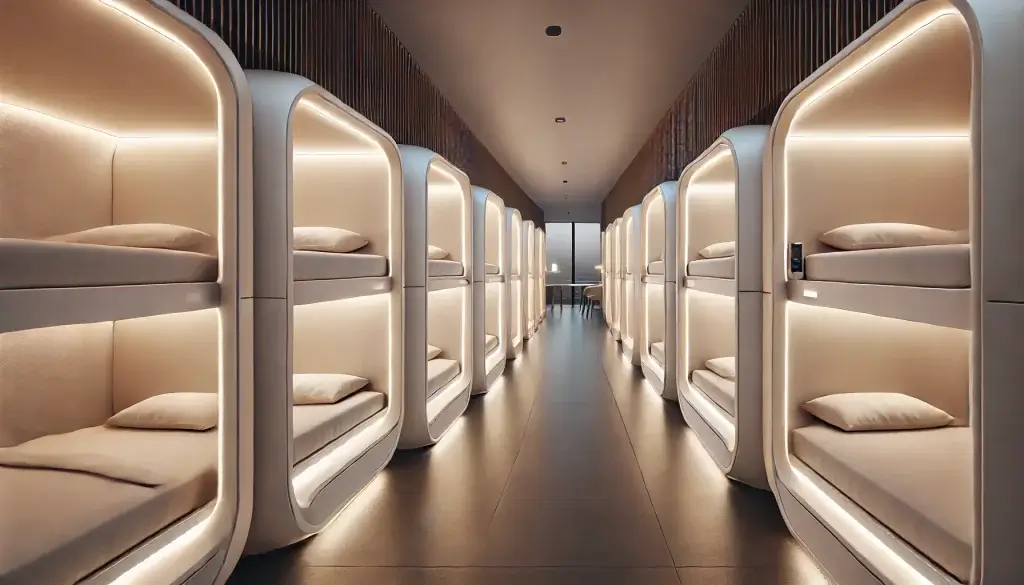
Technology Transforming Hotel Services: From Online Booking to AI Concierges
In the hotel industry, advancements in technology are giving rise to unprecedented services.
Take, for example, the now ubiquitous online booking system. You can easily book a hotel anytime, anywhere, from your computer or smartphone.
Not only can you check room availability in real-time, but you can also read reviews and see photos to choose the perfect hotel for you.
AI-powered services are also emerging.
AI concierges, like highly skilled human concierges, are available 24/7 to meet the various needs of guests.
They can help you with restaurant reservations, provide tourist information, adjust room settings, and offer various other services quickly and accurately, supporting a comfortable stay.
Moreover, various other technologies are being introduced, such as robots that automate front desk tasks and multilingual chatbots. Facial recognition systems and smart keys make checking in and out a breeze.
Advances in technology continue to make hotel services more convenient and comfortable.
Modern Hotel Industry Developments: Enhancing the Customer Experience
In the modern hotel industry, “customer experience” is key.
The focus is not just on providing a place to stay, but on how to make a guest’s stay special.
To achieve this, hotels are making various efforts.
For example, they focus on personalized services, such as preparing amenities tailored to guests’ preferences and suggesting plans for their stay based on their requests in advance.
Also, more hotels are being equipped with facilities for relaxation and health, such as spas, fitness centers, and yoga studios.
It’s great to be able to refresh both mind and body while traveling.
Furthermore, hotels are actively gathering customer feedback through social media and review sites to improve their services.
By listening to the voice of each customer, they aim to create better hotels.
Technology Creating the Hotel of the Future

Hotels of the future will be further enhanced by technology.
Utilizing AI, IoT (Internet of Things), and other technologies may make the world of science fiction movies a reality.
For example, we may see the advent of “smart rooms” that automatically adjust lighting, temperature, and music to suit individual preferences.
With VR (virtual reality) and AR (augmented reality) technology, guests might be able to experience tourist destinations around the world without leaving their hotel rooms.
Hotel services will also become more automated, with robots potentially providing room service and carrying luggage.
Will the hotels of the future evolve into places that provide more comfortable, personalized, and impressive experiences through technology, going beyond just being places to stay? It’s exciting to think about!
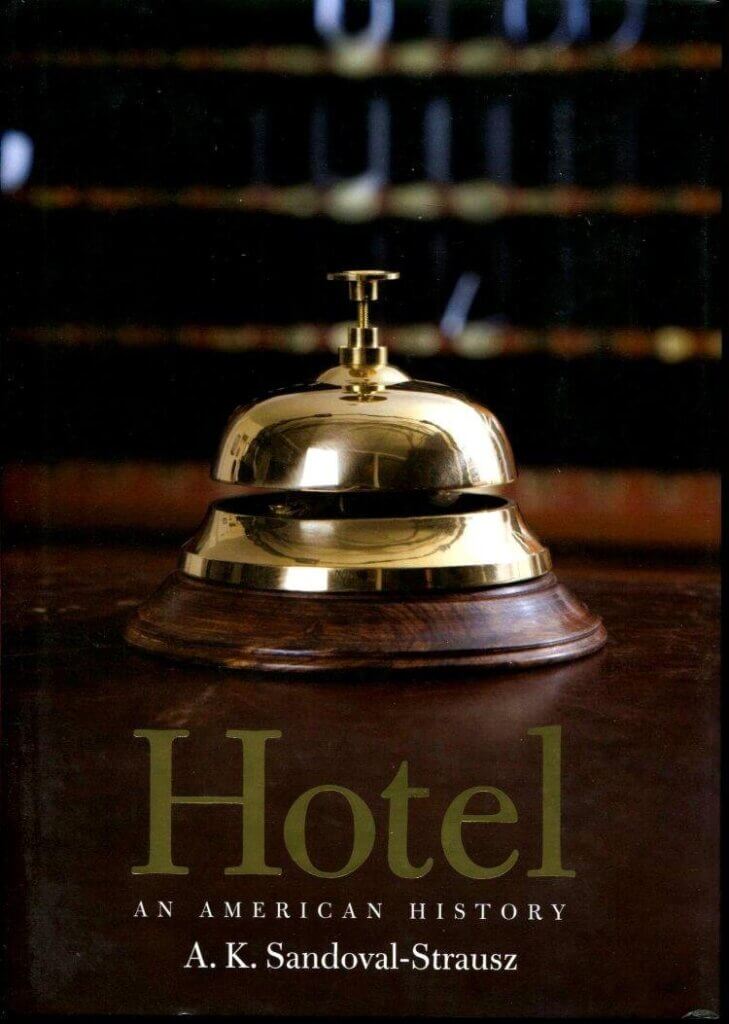
English Translation: Summary: Looking Back at the History of Hotels
- In ancient times, people rested in temples and pilgrim lodges.
- The world’s oldest hotel is Keiunkan, located in Yamanashi Prefecture, Japan.
- Keiunkan was founded in 705 and boasts a history of over 1,300 years.
- In medieval Europe, monasteries and other religious institutions offered lodging for pilgrims.
- Modern hotels emerged in Europe in the late 18th century.
- The Industrial Revolution and the development of transportation networks increased the demand for hotels.
- In the 19th century, luxurious grand hotels became popular in urban areas.
- With the development of railways, many hotels were built around stations.
- The 20th century saw the emergence of new types of hotels, such as motels and capsule hotels.
- Modern hotels are diverse, including business hotels, resort hotels, and boutique hotels.
- Advances in technology have led to services such as online booking and AI concierges.
- With growing awareness of environmental issues, eco-hotels are also attracting attention.
- Hotels are expected to contribute to local communities, not just function as accommodation facilities.
- Future hotels will utilize technologies such as AI and robots to provide a more comfortable lodging experience.
- Hotels have continued to evolve with the times, supporting people’s journeys.
